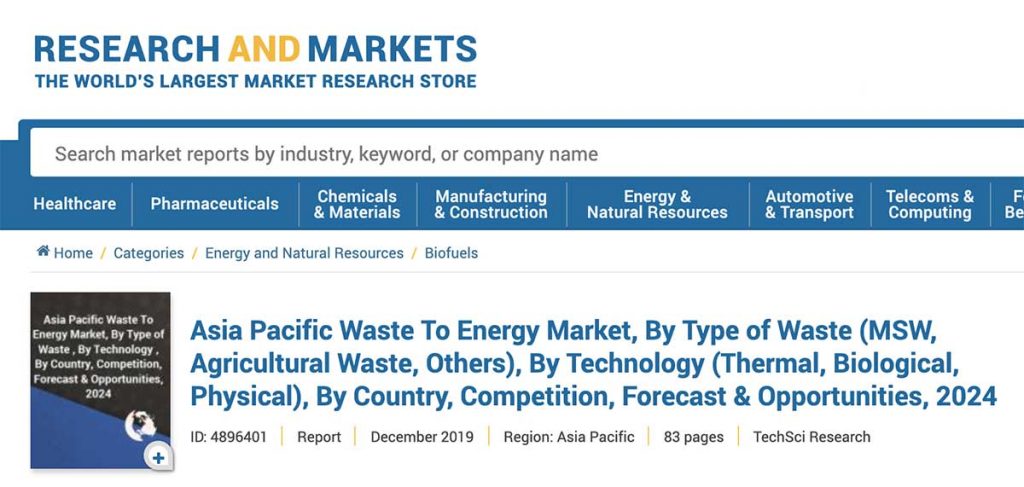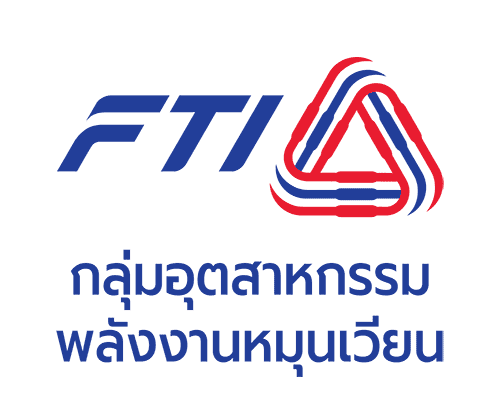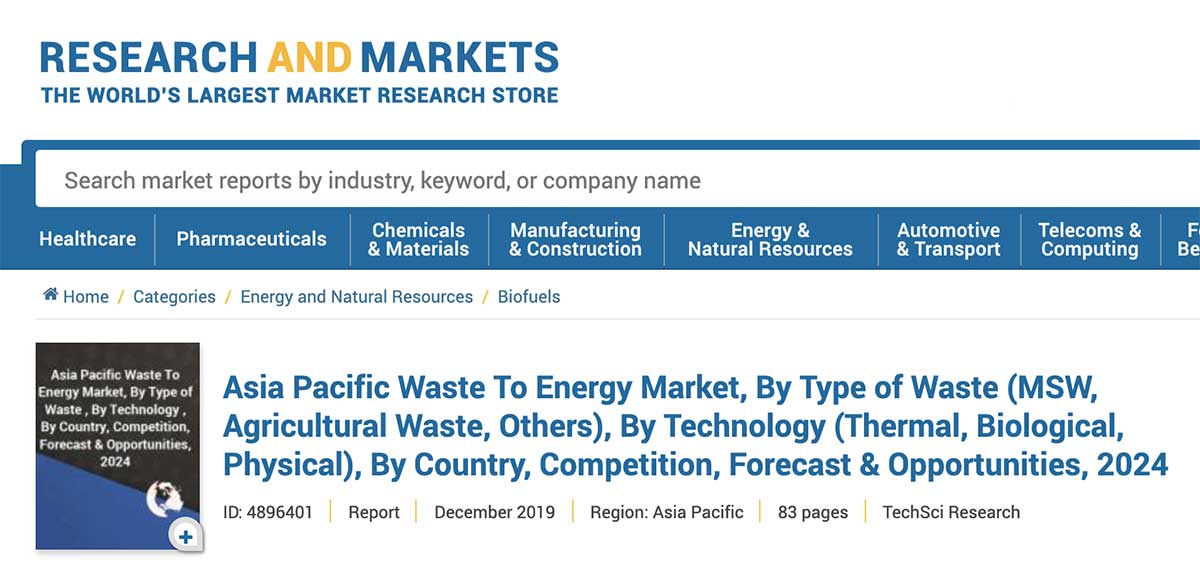
Asia Pacific Waste To Energy Market, By Type of Waste (MSW, Agricultural Waste, Others), By Technology (Thermal, Biological, Physical), By Country, Competition, Forecast & Opportunities, 2024
The Asia-Pacific Waste to Energy Market is expected to grow at a CAGR of 11% during the forecast period. Waste to energy conversion technologies produce energy from waste materials. The energy produced using natural gas, oil, coal, among others is same as the energy generated from this waste to energy conversion method. This conversion method is anticipated to minimize the municipal solid waste (MSW) landfills by 90%, which is further expected to reduce carbon dioxide (CO2) emissions generated by the waste. The key factor responsible for the growth of the Asia-Pacific Waste to Energy Market is growing focus on energy production through renewable energy sources. Moreover, increasing environmental concerns coupled with rise in government initiatives are anticipated to drive the waste to energy market in region in the coming years. In addition, significant growth in power consumption across the region is expected to positively influence market growth over the coming years.
The Asia-Pacific Waste to Energy Market is segmented based on type of waste, technology, country and company. By type of waste, the market is categorized into MSW, agricultural waste, and others. Among them, the MSW category dominated the market until 2018 and is anticipated to maintain its leading position during the forecast period as well. The segment’s high growth can be attributed to the use of municipal solid waste as a primary source of fuel for energy by waste-to-energy (WTE) plants. The MSW has been increasing rapidly in China owing to rapid urbanization and economic developments. Therefore, the effective disposal of MSW has become a serious concern for the country.
Key players in the Asia-Pacific Waste to Energy Market include Mitsubishi Heavy Industries Environmental & Chemical Engineering Co., Ltd., C&G Environmental Protection Holdings Limited, China Everbright International Limited, Covanta Energy Asia Pacific Holdings Ltd., Suez S.A., Veolia India Private Limited, CNIM Martin Private Limited, Hitachi Zosen Corporation, China Jinjiang Environment Holding Co Ltd, GrandBlue Environment Co., Ltd., among others. The players operating in the market are rapidly adopting several strategies such as business expansions, joint ventures, mergers & acquisitions, agreements in order to expand their geographic reach and uplift their market positions.
Years considered for this report:
- Historical Years: 2014-2017
- Base Year: 2018
- Estimated Year: 2019
- Forecast Period: 2020–2024
Objective of the Study:
- To analyze and forecast the market size of the Asia-Pacific Waste to Energy Market.
- To forecast the Asia-Pacific Waste to Energy Market based on type of waste, technology and regional distribution.
- To identify drivers and challenges for the Asia-Pacific Waste to Energy Market.
- To examine competitive developments such as expansions, new product launches, mergers & acquisitions, etc., in the Asia-Pacific Waste to Energy Market.
- To conduct the pricing analysis for the Asia-Pacific Waste to Energy Market.
- To identify and analyze the profile of leading players operating in the Asia-Pacific Waste to Energy Market.
Both primary as well as exhaustive secondary research were performed for this study. Initially, Researchers sourced a list of waste to energy players across the region. Subsequently, They conducted primary research surveys with the identified companies. While interviewing, the respondents were also enquired about their competitors. Through this technique, they could include the companies which could not be identified due to the limitations of secondary research. The author analyzed the product types, application types and presence of all major waste to energy providers across the region.
The author calculated the Asia-Pacific Waste to Energy Market size by using a bottom-up approach, where data for various end-user industries and its application across various segments was recorded and forecast for the future years. Researchers sourced these values from the industry experts and company representatives and externally validated through analyzing historical data of these product types and applications for getting an appropriate, overall market size. Various secondary sources such as company websites, news articles, press releases, company annual reports, investor presentations and financial reports were also studied.
Key Target Audience:
- Waste to energy players and other stakeholders
- Government bodies such as regulating authorities and policy makers
- Organizations, forums, associations and alliances related to waste to energy market
- Market research and consulting firms
The study is useful in providing answers to several critical questions that are important for the industry stakeholders such as waste to energy providers and partners, end-users etc., besides allowing them in strategizing investments and capitalizing on the market opportunities.
Report Scope:
In this report, the Asia-Pacific Waste to Energy Market has been segmented into following categories, in addition to the industry trends which have also been detailed below:
Market, By Type of Waste:
- MSW
- Agricultural waste
- Others
Market, By Technology:
- Thermal
- Biological
- Physical
Market, By Country:
- China
- India
- Japan
- South Korea
- Australia
Competitive Landscape
- Company Profiles: Detailed analysis of the major companies present in the Asia-Pacific Waste to Energy Market.
Available Customizations:
With the given market data, the author offers customizations according a company’s specific needs.
Source : https://www.researchandmarkets.com/

